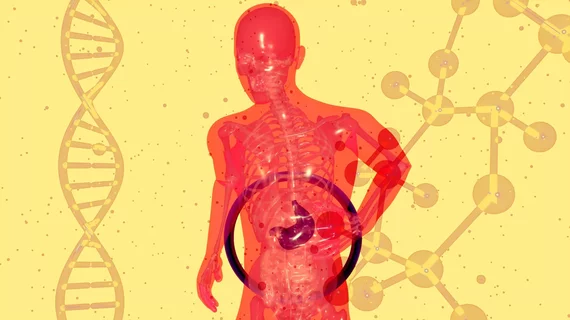5 avenues along which the 10-year-old Society of Abdominal Radiology is advancing
Having marked its 10th birthday in the year just past, the Society of Abdominal Radiology is retracing its steps and surveying its horizons.
The group does so transparently, publishing reflections and aims as written out by its board of directors and senior leadership.
Abdominal Radiology posted the piece Jan. 5 [1].
The SAR formed in 2012 when the Society of Gastrointestinal Radiologists merged with the Society of Uroradiology, corresponding author Katherine Maturen, MD, of the University of Michigan and colleagues recall.
“The overarching rationale was that a large, unified society would mirror abdominal radiology practice, include both diagnostic imaging and interventional radiology (IR), better serve its members, and be a stronger and more influential body,” they write.
The article includes brief status updates on five key indicators of progress:
1. Membership and growth. Prior to the 2012 merger, the SUR and SGR each had fewer than 400 members, the authors point out. As of fall 2022, the SAR had grown to more than 1,700 members, including emeritus and international members, and more than 450 members-in-training.
The designation Fellow of the SAR (FSAR) recognizes service and contribution to the society and subspecialty and has replaced the FSUR and FSGR designations. More than 300 members are currently fellows.”
2. Mission, values and goals. The organization’s original bylaws outlined goals around cultivating diagnostic and interventional advances, encouraging member communications, and supporting abdominal radiology across the three prongs of academic medicine—care, education and research.
“In 2016 and later in 2022, the board of directors revised the goals to provide a broader, more encompassing set of statements that included the society’s mission (which also expressed an overall vision), values (newly expressed as single terms and listed alphabetically to express equal importance), as well as its goals,” the authors write.
The repeated re-assessment of the society’s goals has been intentional, to incorporate new ideas and adapt to advances in imaging and image-guided intervention, our understanding of pathophysiology and new treatment options.”
3. Culture of mentorship. Maturen and colleagues note the SAR’s successful maintenance over 10 years, and counting, of an “approachable and friendly” culture as long modeled by its two predecessor societies. Today as in 2012, “newcomers are welcomed and members are supported at every stage of their careers,” they write before adding:
Despite substantial society growth, informal mentorship opportunities at the annual meeting continue and are buttressed further by new, formal mentorship programs that are embedded in many of the society’s programs.”
4. Official journal: Abdominal Radiology. Naming a peer-reviewed publication of record in 2012 represented a major move toward full society identity, the authors recall. In 2016 the group changed the journal’s original name, Abdominal Imaging, to Abdominal Radiology to match the name of the new society and, just as importantly, to make sure interventional radiologists knew the journal was theirs too.
The relationship between the society and the journal has been symbiotic; while society members have benefited, the journal has grown in both number of publications and impact factor.”
5. Recognition of excellence. The SAR regularly celebrates members who contribute to the subspecialty in exceptional ways, the authors point out.
Annually awarded honors have included the prestigious Howard M. Pollack MD and Walter B. Cannon MD Awards, named to commemorate pioneers in genitourinary and gastrointestinal radiology, respectively. In 2019 the group combined these two top honors with the pre-existing GU and GI lifetime achievement awards into a single, SAR gold medal award. The medal itself is engraved with portraits of Drs. Pollack and Cannon.
Other distinctive annual awards include the Igor Laufer Visiting Professorship and the Richard Marshak International Lecturer awards, both bestowed on some of the [SAR’s] best educators, and numerous additional annual meeting awards for research and education.”
Maturen and colleagues state that, although it’s still quite young, the SAR is fulfilling the original goals of the 2012 merger and growing in size, scope and influence.
SAR is the largest society dedicated to abdominal radiology in North America, they underscore, and its engagement with its members “is now year-round, with a multitude of educational offerings and opportunities for collaborations in research and clinical practice improvement.”
More:
Over the next 10 years (and beyond), the SAR will continue to grow and adapt to new challenges, expand its influence and remain committed to meeting the needs of its members. All physicians, allied personnel and trainees interested in abdominal radiology who are not yet members of the society are encouraged to join.”
There’s a good deal more, and the article is available in full for free.

